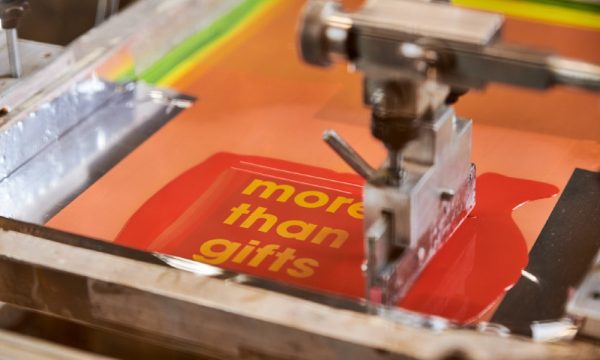
Guide to Branding Techniques
1. Pad Printing
What is pad printing?
With UV light, your logo is exposed on to a metal plate (called die plate or cliché). This die plate contains a photo sensitive layer, which causes the logo to “sink” into this top layer. When the ink is applied it will fill into the deeper parts where the logo is. A smooth stamp made of silicon rubber takes the ink from the die plate and transfers it onto the item. Pad printing is hence a indirect printing method. Due to the chemicals in the ink, the ink will bite itself into the material. Pad printing is also known as ‘Tampo’ printing.
Which materials can be pad printed?
- Plastics
- Polypropylene (PP)
- Polystyrene (PS)
- Polyethylene (PE)
- PVC
- Metal
- Glass
- Ceramic
- Wood
- Paper
Some materials are harder to print than others and might need pre-treatment, special additives to the ink or longer drying time (metal, glass, ceramic).
Which items can be pad printed?
Almost any kind of shape/item in the world can be printed by use of pad printing. That is why this is the most used printing technique. Pens, desk clocks, business card holders, USB sticks, ceramic mugs, memo clips, key chains…you name it. Round or flat, everything is possible. However, the material of the item or the limited printing size can mean you need to switch to a different printing technique.
Advantages of pad printing
- All kind of materials can be printed
- All kind of shapes can be printed
- Speed
- Low cost
- Up to 6 spot colours and full colour imprint is possible
- Small details are printable (material dependent)
Disadvantages of pad printing
- Limited print size (especially on rounded items)
- Low ink transfer; light colours (especially on darker back grounds) may take several print runs for good coverage
- Longer drying time on metal, glass, ceramic
- The ink on metal items doesn’t penetrate the material, it stays on top. This means that the ink will go off if the item is scratched with
something sharp (e.g. keys) - Similarly, the ink will not penetrate ceramic items. It will mean the product is not 100% dishwasher proof and the imprint will fade after a while.
2. Screen Printing
What is screen printing?
Ink is printed directly onto the item through a “screen”. The screen contains a mesh (maze) with small openings. A photo sensitive layer is applied, on which the artwork or logo is exposed under UV light. On the part where the logo is, the openings in the mesh will remain open. The screen will be put into a carousel; ink is put onto the screen and by use of a squeegee pressed onto the item. If the item is printed via the Rotary or Round Screen Printing method, the machinery will rotate the item whilst the ink is applied via a screen and squeegee. After each print run, the item needs to be put through a drying tunnel, or dried by hand by use of a paint stripper or hair dryer.
Which materials can be screen printed?
- Plastics
- Polypropylene (PP)
- Polystyrene (PS)
- Polyethylene (PE)
- PVC
- Metal
- Glass
- Ceramic
- Wood
- Paper
- Textiles (Polyester, Nylon, Cotton)
Which items can be screen printed?
- Bags
- T-shirts
- Wine boxes
- Inflatables
- Caps
- Umbrella’s etc.
- As long as the surface that we need to print is flat, all items can be printed.
Advantages of screen printing
- Big print sizes
- Better coverage than pad printing due to larger ink transfer
- Less adhesion problems
- Print express possible
Disadvantages of screen printing
- Detailed printing on rough materials is not possible.
- Registering colours is complicated on double layered materials.
- Print surface needs to be flat, so printing close to zippers, buttons, cords, seems, etc. is not possible
- Materials that cannot take heat well are difficult to print (PE,PVC etc) because they will melt in the drying tunnel
3. Transfer Printing
What is transfer printing?
Your design is printed on to a special silicon based thermal paper, instead of directly onto the item. The colours in your design are printed one by one onto the transfer paper, and dried after each layer through a drying tunnel. After all the colours are printed, a layer of glue is then printed in the same shape as the logo, and then finally a special powder is applied. By use of a heat press, the transfer paper with the print on it, will be applied to the item. The heat makes the glue liquid, and the pressure allows the print stick to the item. Once the transfer is cooled off, the paper is removed and your design will remain on the item.
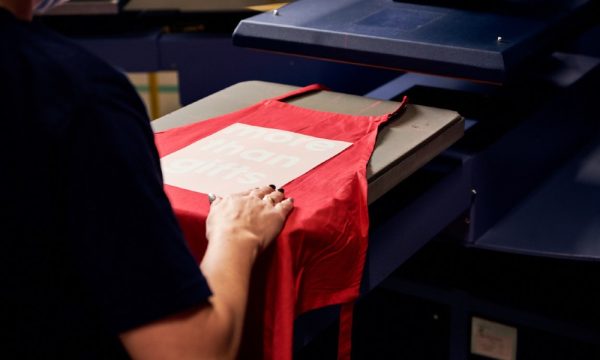
Which materials can be transfer printed?
- Textiles (Polyester, Nylon, Cotton)
- Leather
- Polyurethane (PU)
- Carton
- Fleece
- Felt
Which items can be transfer printed?
As long as the surface to print on is flat, all items can be transfer printed. Bags, T-shirts, caps, umbrellas, waist bags, etc.
Advantages of transfer printing
- No limitation in the number of colours used in the design
- Small details are printable (unless the surface is rough)
- Printed colours are very bright
- Exact Pantone colour match is possible when printing onto a white base
- Personalisation is possible
Disadvantages of transfer printing
- Print prices are higher than screen printing as it is a longer process
- In general production times are longer than in screen printing
- The print surface needs to be flat, so printing close to zippers, buttons, cords, seams, etc is not possible.
- Some materials are not printable with a transfer (PVC for instance will melt when applying)
- Fleece, felt and ethylene vinyl acetate (EVA) materials: the shape of the plates used on the machine may be visible in the material after applying
4. Laser Engraving
What is laser engraving?
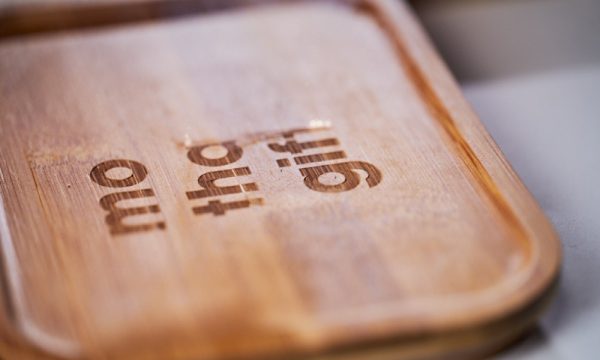
Laser engraving is a very intricate process which involves carving your logo into the chosen item, producing a permanent form of branding.
Your logo is positioned to fit your product using specialist computer software. It is then sent to the laser engraving machinery. With a light beam (YAG laser) or a gas beam (CO2 laser) the top layer of the material is “burnt” away. This reveals the logo or design. The more complex the logo or the bigger the surface to engrave, the longer the production time. A simple line of text may take 5 seconds but a square of 10×10 cm may take a minute or more per piece. Rotary laser engraving machinery allows for branding to cover the whole circumference of an item.
Which materials can be laser engraved?
- Metal
- Aluminium (the logo is always white)
- Wood (is a natural product so not all engravings will be the same)
- Glass (most of the engravings will be white)
- Fleece (engravings will be a bit darker than the fleece)
- Felt
- Leather
- Some (hard) plastics
- Paper
- Polyurethane (PU)
Which items can be laser engraved?
- Drinkware
- Business card holders
- Key chains
- Pens
- Wine boxes
- Desk clocks
- Anything made of one of the materials suitable for engraving.
Advantages of laser engraving
- Very durable – the print can not be removed
- Luxurious look, especially on shiny metal
- Extremely detailed
- Personalisation possible
- No chemicals needed in the process
- Print express possible
Disadvantages of laser engraving
- More expensive than pad printing
- Colour of engraving is determined by the material and cannot be influenced
- Limited print size on rounded items
- Large or complex logos can be time consuming during production
5. Embroidery
What is embroidery?
Logos which are embroidered use embroidery machinery to stitch your design using needles and threads. Firstly, your digital logo is redrawn with specialist computer software to determine how many stiches are needed to create it. Once your logo is redrawn, a ring is put on two sides of the item to keep it in place. The item is then put under a large sewing machine with sewing heads that can contain up to 15 needles. This means you can have up to 15 different thread colours to make your artwork.
Which materials can be embroidered?
- Polyester
- Nylon
- Fleece
- Cotton
Which items can be embroidered?
- Hats and caps
- Back packs
- Laptop bags
- Clothing like T-shirts, Body warmers, hoodies and coats
Advantages of embroidery
- Luxurious looking
- Long lasting
- Up to 15 colours
Disadvantages of embroidery
- More expensive (costs are based per cm2)
- No small details (lower case letters need to be min. 5-6 mm in height)
- Time consuming
- Some positions are hard to embroider because of zippers, buttons etc.
- No exact Pantone colour matching
- Additional charge for personalisation or use of gold/silver thread
6. Doming
What is doming?
The term doming comes from the rounding that is reminiscent of a dome. On a plotter your logo is printed on a roll of adhesive paper. A cutter will cut out the desired shape and then a 2 component resin layer (epoxy) is applied. This layer is crystal clear and durable, this not only means your logo will be protected against colouring, but also it looks slightly enlarged and is protected against scratching.
Which materials can doming be used on?
- Metal
- Wood
- Leather
- Plastics
- Polyurethane (PU)
- Carton
Which items can doming be used on?
- Key chains
- Pens
- Folders
- Wine boxes
- Kitchen appliances
- Any item of which the surface is flat and suitable to put a sticker on
Advantages of doming
- Any desired shape is possible
- High quality finish
- Luxurious and exclusive looking
- Personalisation possible
Disadvantages of doming
- Surface has to be flat
- No adhesion on textile fabrics
- More expensive (costs are based per cm2)
- Time consuming
7. Digital Transfer
What is digital transfer?
On a plotter your logo is printed onto a special roll of white paper which contains glue for the ink to stick to. A cutter cuts out the desired shape and by use of a heat press, the transfer is applied onto the item (just like in transfer printing as above).
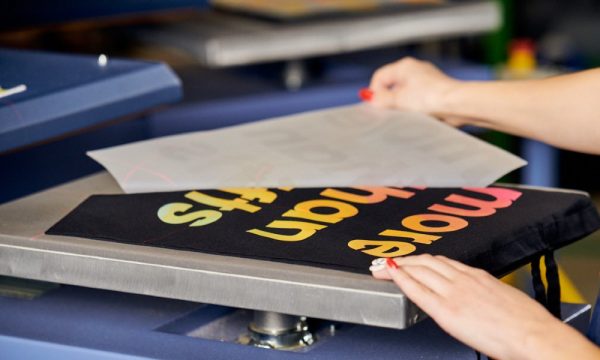
Which materials can be digital transfer printed?
- Textiles (Polyester, Nylon, Cotton)
- Leather
- Polyurethane (PU)
- Carton
- Fleece
- Felt
Which items can be digital transfer printed?
As long as the surface is flat, all items can be printed. Such as bags, T-shirts, caps, umbrella’s etc.
Advantages of digital transfer printing
- No limitation in the number of colours due to the digital print process
- Any desired shape is possible
- Small details printable
- Printed colours are very bright
- Personalisation possible
- High quality
- Cheap in small order quantities or print sizes
Disadvantages of digital transfer printing
- Pantone colours cannot be used because of the 4 colour print process
- Only suitable for “single cut forms” (E.g. All the inside of letters need to be peeled out by hand)
- More expensive with big order amounts or print sizes (prices per cm2)
8. Ceramic Transfer
What is ceramic transfer printing?
Like digital transfer printing, ceramic transfer involves printing onto a special transfer paper. The paper is made wet and put on/around the item. Then the item is baked in a oven at 700 degrees, causing the pores of the material to open up. When cooling down the pores will close again and the imprint is embedded in the material.
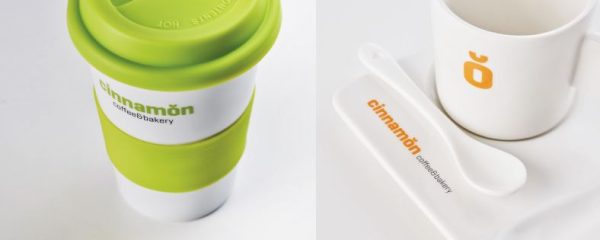
Which materials can be ceramic transfer printed?
- Ceramic
- Porcelain
- Glass
Which items can be ceramic transfer printed?
- Mugs
- Plates
- Glasses
- Pots
Advantages of ceramic transfer printing
- 100% dishwasher proof
- Also possible to transfer on the inside or handle of mugs
- Big print size possible (up to 20 x 7 cm on a straight mug)
Disadvantages of ceramic transfer printing
- More expensive
- Time consuming
- Exact Pantone colour matching is difficult (light colours for instance will come out quite darker)
- Full colour imprint only possible on a white background
9. Digital Label Printing
What is digital label printing?
On a plotter your logo is printed on a roll of sticker paper. A cutter will cut out the desired shape and the stickers are ready for use.
Which materials can digital labels be used on?
- Leather
- Polyurethane (PU)
- Carton
- Fleece
- Felt
- Plastic
- Metal
Which items can digital labels be used on?
- Any item of which the surface is flat and is suitable to put a sticker on. Such as:
- Key chains
- Pens
- Folders
- Wine boxes
- Kitchen appliances
Advantages of digital labels
- Photo quality
- Full colour
- Every shape possible
- Personalisation possible
Disadvantages of digital labels
- Pantone colours can’t be matched at 100% (full colour process)
- Shapes must be made of a single cut otherwise it is too complex to produce
10. Digital Printing
What is digital printing?
Using a special inkjet digital printer, the print heads move above the promotional item and create the images in your logo/design. This is then printed directly onto the item and at the same time a UV lamp dries the ink. The digital printer can print in CMYK (cyan, magenta, yellow and black) colour mode and in white producing millions of different colours and shapes. The printer heads can be adjusted in height so even high items (150 mm) can be printed digitally, as long as the surface that needs to be printed is even and flat.
Which materials can be digital printed?
- Plastic
- Metal
- Wood
- Paper
- Imitation leather
- Glass
- Cotton
Which items can be digital printed?
- Notebooks
- Sliding games
- Wine boxes
- Lids
- T-shirts
- Hoodies
- Bags
- As long as the surface is even and flat they can be digitally printed onto
Advantages of digital printing
- Photo quality
- Bigger print sizes compared to pad print
- You can print BMP file (vector artwork is not necessary)
- Print with white ink
- Printed very quickly (depends on item size)
- Great for detailed logos
Disadvantages of digital printing
- Pantone colour matching is more difficult due to full-colour production process
- Depending on the material, pre-treatment may be necessary
- Production time and costs depend on the logo size
- No curved items print
11. Sublimation Transfer Printing
What is sublimation transfer printing?
Sublimation transfer is a digital print technique. The printing starts with a special paper which the digital plotter prints onto. The printed paper template is then applied onto a polyester surface by the use of a heat press. The heat causes the pigments to leave the paper and infuse into the material.
Which materials can be sublimation transfer printed?
- Materials that are resistant to temperatures over 200°C (the temperature of the heat press). Polyester is the most commonly used material.
- Every material used is covered by a polyester layer.
Which items can be sublimation transfer printed?
A sublimation template can be transferred onto almost every item but the template must be covered by a polyester layer. Items such as:
- Lanyards
- T-shirts
- Mugs
- Bags
- Umbrellas
- Tablet bags
Advantages of sublimation transfer printing
- Photo quality
- Printing speed (depending on the item size)
- You can print BMP file (vector artwork is not necessary)
- Big surface print
- Relatively low costs
- Less vulnerable to fading and distortion over time
Disadvantages of sublimation transfer printing
- Materials used need to withstand high temperatures
- Polyester surface must be white
- Pantone colour matching is more difficult due to full-colour production process
12. Debossing
What is debossing?
Debossing is a technique which leaves an impression of your logo or design on an item. This is done by engraving the artwork into a metal stamp/plate, which is then applied to the surface of the item. When removed, it leaves behind a recessed imprint. The material has to be thick enough to withstand the pressure of the machine and the surface has to be even and flat. You can also have an item embossed, which instead of the metal plate creating an indent, it raises the logo to create a 3D effect.
Which materials can be debossed?
- Leather
- Polyurethane (PU)
- Carton
Which items can be debossed?
- Document folders
- Wallets
- Business card folders
- Notebooks
- Keyrings
- Passport holders
- Luggage Tags
Advantages of debossing
- No chemicals needed
- Foil print is possible (clear shiny foil can be printed into the debossing)
Disadvantages of debossing
- No small details
- Limited branding size
- With in foil print, no exact Pantone colours are possible
We hope this informative blog has enabled you to gain an understanding into how merchandise is branded! If you are still left with questions, or would like to receive a PDF version of this guide, please do not hesitate to get in touch with the Steel City team. We have years of experience working with different materials, products and branding methods.
Read Next: Branded Merchandise Artwork Formats
Please note this blog has been updated March 2025.


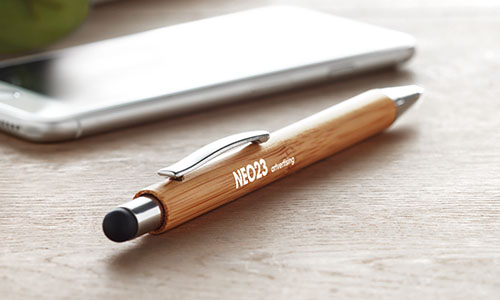

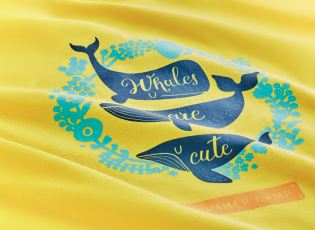
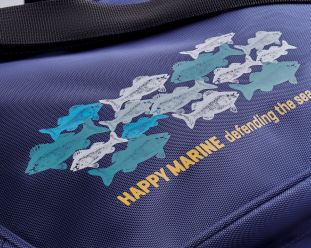
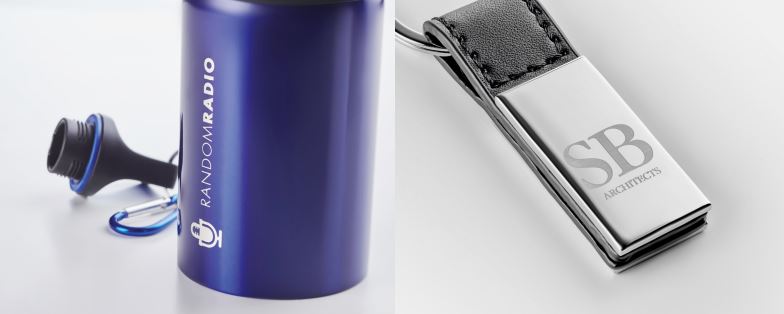
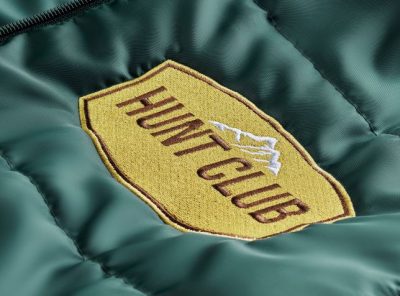
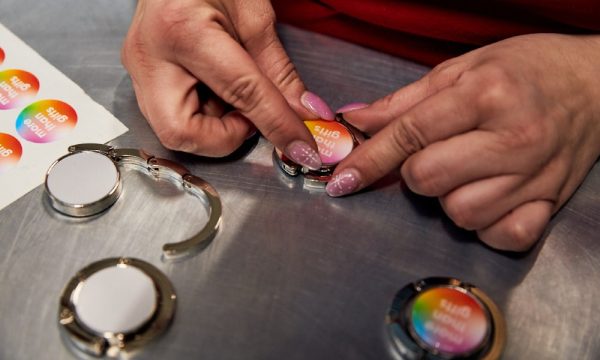
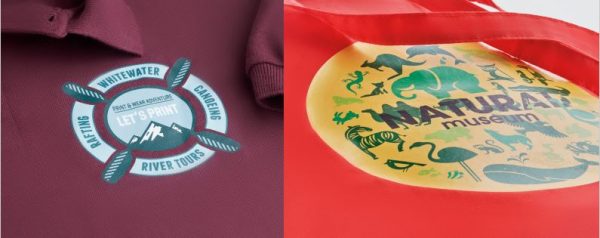
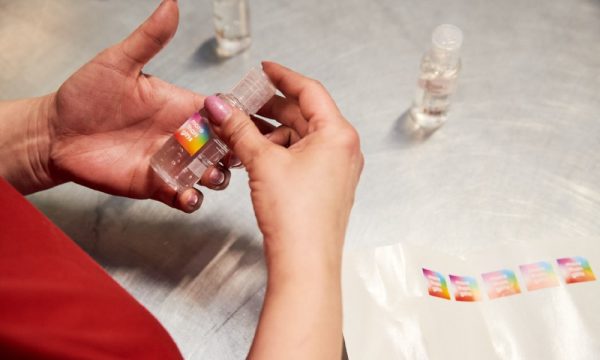
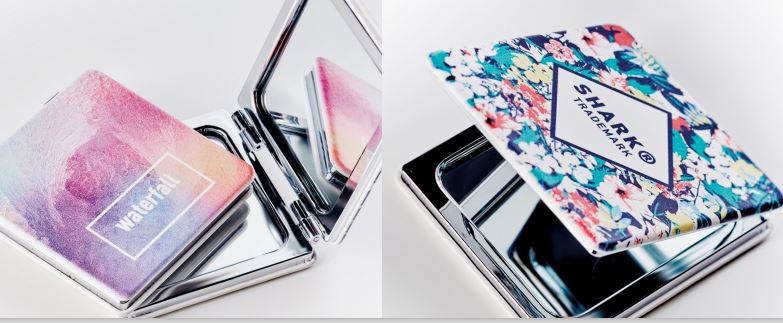
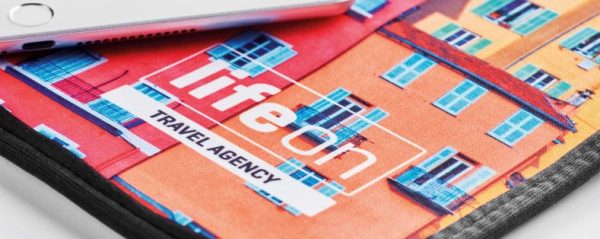
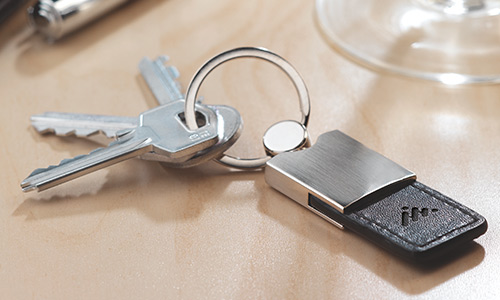

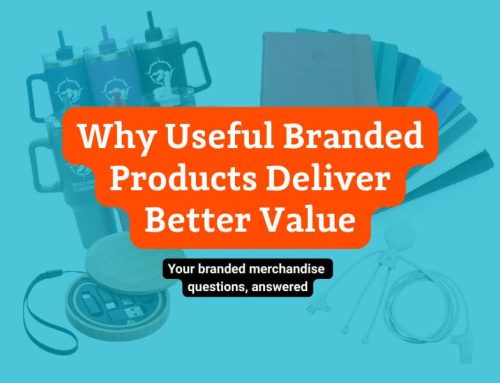
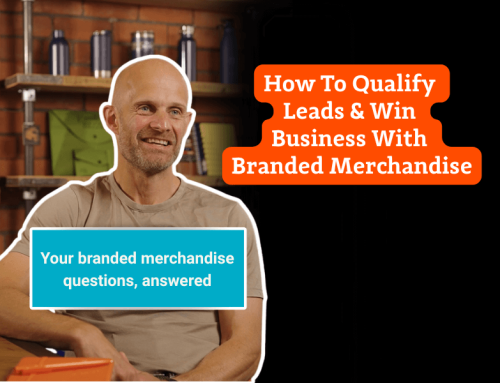
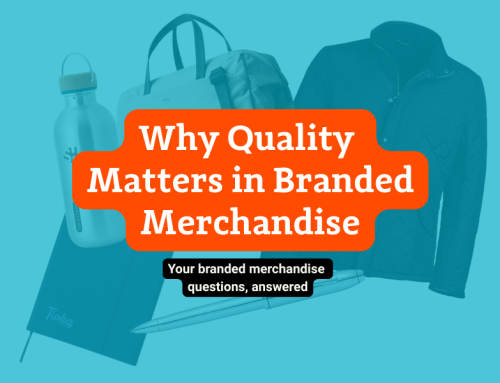
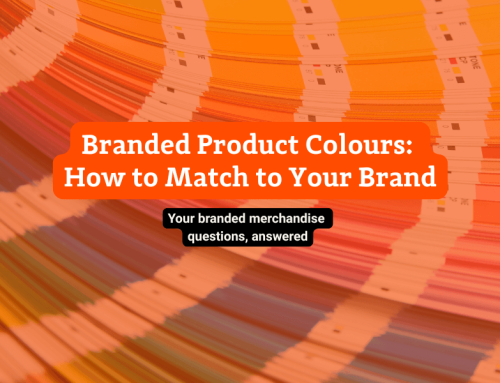
Leave A Comment